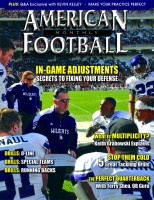Article CategoriesAFM Magazine
|
Eyes Up – Quarterbacks Coach Terry Shea has devoted more than 40 years of his coaching life to the development of the position including the training of elite players like Robert Griffin III.© More from this issueTerry Shea knows quarterbacks. In addition to quarterback coaching stints in the CFL, college, and the NFL, Shea has helped prepare future NFL quarterbacks for their professional careers. Among others, he has tutored Matthew Stafford, Sam Bradford, and most recently, Robert Griffin III. When elite quarterbacks want the best in personalized instruction, they call Shea. The compilation of his 40 years as an expert in coaching quarterbacks is now in his recently published book, Eyes Up, a 418-page encyclopedia on quarterback play. It includes the attributes needed for both the physical and mental make-up to be successful at the position. Additionally, Shea has sections of the book on tips on determining defensive alignments, read progressions, detailed drills, how to improve a quarterback’s accuracy and a complete summer conditi....The full article can only be seen by subscribers.
|
|
|||||||
| HOME |
MAGAZINE |
SUBSCRIBE | ONLINE COLUMNISTS | COACHING VIDEOS |
Copyright 2025, AmericanFootballMonthly.com
All Rights Reserved





